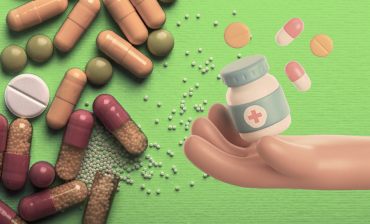Abstract:
The pharmaceutical industry is a vital component of global healthcare, encompassing multiple stages from research and development to production and distribution of medicinal products. This article provides an economist’s viewpoint, exploring the core aspects of the industry’s intricate operations and market dynamics.
Introduction:
Thriving on innovation, stringent regulations, and global demand dynamics, the pharmaceutical sector’s structure and operations can be better understood through an economic lens.
Research and Development (R&D):
At the heart of the industry lies extensive research and development (R&D), driving the discovery and validation of novel compounds with medicinal potential.
Investment:
R&D activities require substantial capital investment, often consuming a significant portion of a company’s budget. These investments can take several years to yield profitable returns, resulting in inherent risks and uncertainties.
Patent Protection:
To safeguard their investments, pharmaceutical firms are granted patent protection for new discoveries, providing a temporary monopoly to recoup investments and generate profits.
Clinical Trials:
Rigorous testing is conducted before a drug can reach the market, ensuring its safety and efficacy.
Phases:
Clinical trials are divided into multiple phases, each examining the drug under specific conditions and scales.
Costs and Time:
These trials are time-consuming, often spanning years, and involve exorbitant expenses.
Production and Manufacturing:
Upon successful completion of clinical trials, mass production of the drug begins.
Economies of Scale:
Larger pharmaceutical companies benefit from economies of scale, reducing per-unit costs.
Quality Control:
Maintaining consistent quality and safety is paramount, requiring regular checks and adherence to global standards.
Marketing and Distribution:
Drug manufacturers embark on marketing and distribution efforts to introduce their products to healthcare providers and the wider public.
Advertising Restrictions:
Pharmaceutical companies face stringent regulations regarding drug advertising to prioritize public safety.
Global Distribution:
The industry’s global reach necessitates an intricate distribution network to navigate diverse regulatory environments across countries.
Pricing Dynamics:
The pricing of pharmaceutical products involves a complex interplay of factors, including R&D costs, demand elasticity, competition, and regulatory considerations.
Monopoly and Pricing Power:
Temporary monopolies granted by patents allow firms to set higher prices for their products.
Generic Competition:
Once patents expire, generic versions of drugs flood the market, leading to price reduction through increased competition.
Regulation and Compliance:
The pharmaceutical industry operates within a robust regulatory framework.
Licensing:
Before a drug can enter the market, it must receive approvals from regulatory bodies to ensure safety and effectiveness.
Continuous Monitoring:
Post-approval, continuous monitoring ensures the absence of long-term adverse effects.
Conclusion:
A comprehensive understanding of the pharmaceutical industry requires insights into its economic, scientific, and regulatory dimensions. Despite challenges, the industry’s crucial role in advancing global health remains undeniable.
Author: Pooyan Ghamari, Swiss Economist & Visionary







